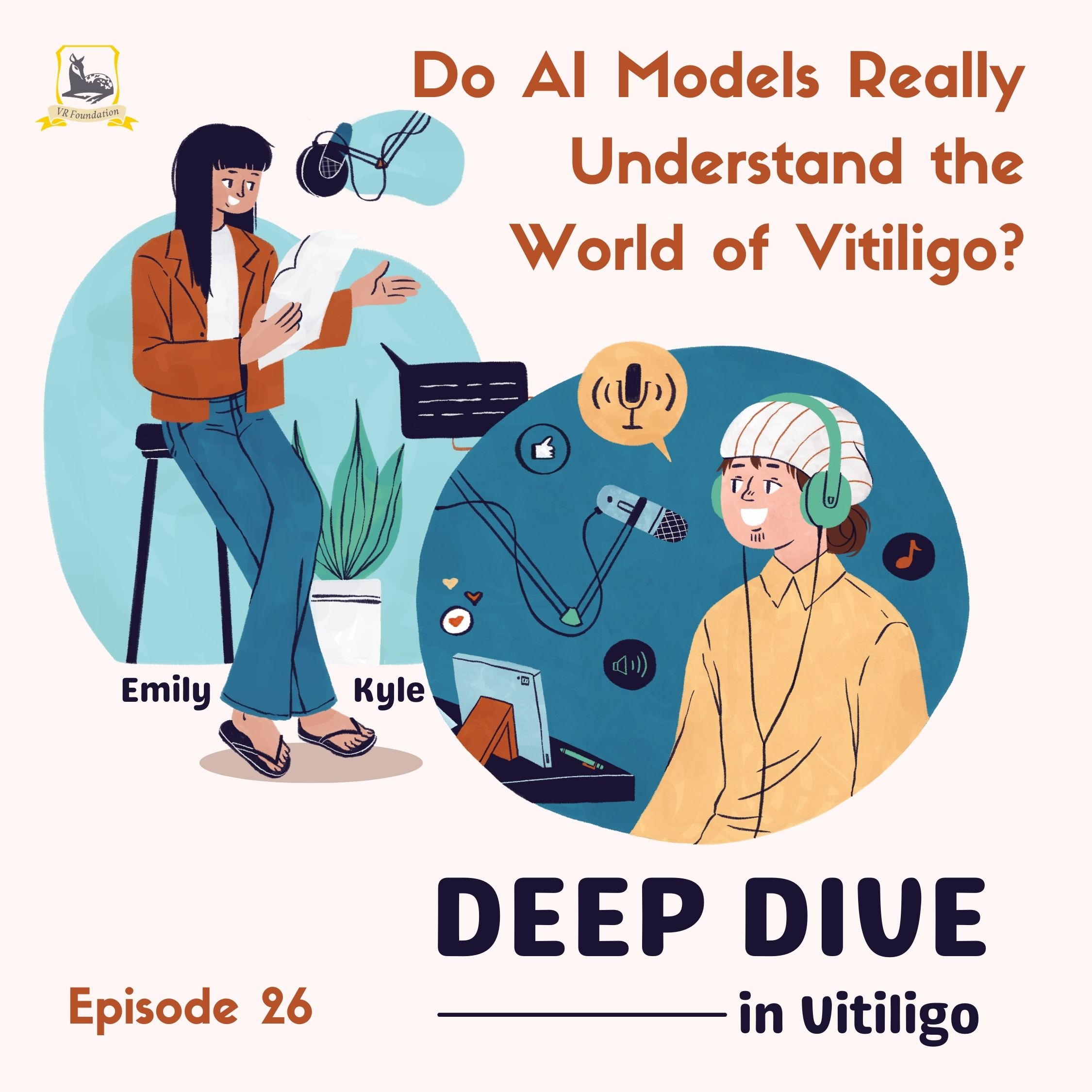Our work is entirely funded by private donations – we receive no money from government. Your money will help us continue funding research into vitiligo and supporting people affected by the condition.
Podcast
The Great AI Debate: Do AI Models Truly ‘Get’ It? (Ep. 26)
Do large language models like ChatGPT or Deep Seek actually understand the world, or are they just really good at faking it?
In this episode, we dig into the debate: are LLMs building genuine “world models” or just recycling patterns from massive datasets? We’ll explore real-world AI fails, like the skin lesion detector that linked rulers to cancer, and what that means for AI in diagnosing conditions like vitiligo.
Tune in to get the real story behind AI’s so-called “understanding.”
Suggested reading:
- Do AI Models Really Understand the World of Vitiligo?
- Cheaper AI, Higher Stakes: What Startups and Big Pharma Must Know

FAQOther Questions
- What is the best therapy for localized vitiligo?
Localized vitiligo, where the white patches are limited to one or a few areas of the body, can be managed with a few treatment approaches. The best therapy usually depends on th...
- I have a new job - should I tell colleagues about my vitiligo?
Starting a new job can be both exciting and nerve-wracking, — especially if you’re concerned about stares or questions regarding your skin. Taking a proactive approach can help ...
- What are risks of oral and topical corticosteroids?
Corticosteroid drugs (like hydrocortisone, and others) are often used for treating vitiligo. By mimicing the effects of hormones your body produces naturally in your adrenal gla...
Though it is not always easy to treat vitiligo, there is much to be gained by clearly understanding the diagnosis, the future implications, treatment options and their outcomes.
Many people deal with vitiligo while remaining in the public eye, maintaining a positive outlook, and having a successful career.
Copyright (C) Bodolóczki JúliaBy taking a little time to fill in the anonymous questionnaire, you can help researchers better understand and fight vitiligo.